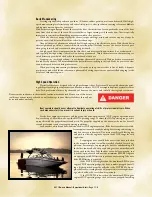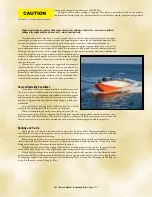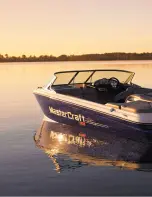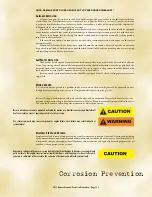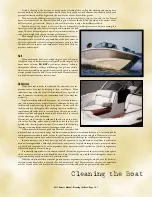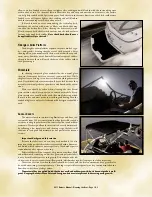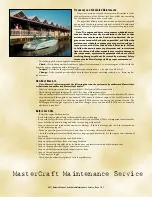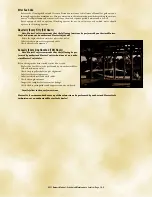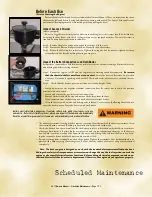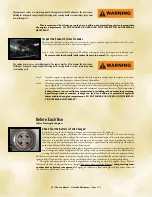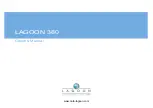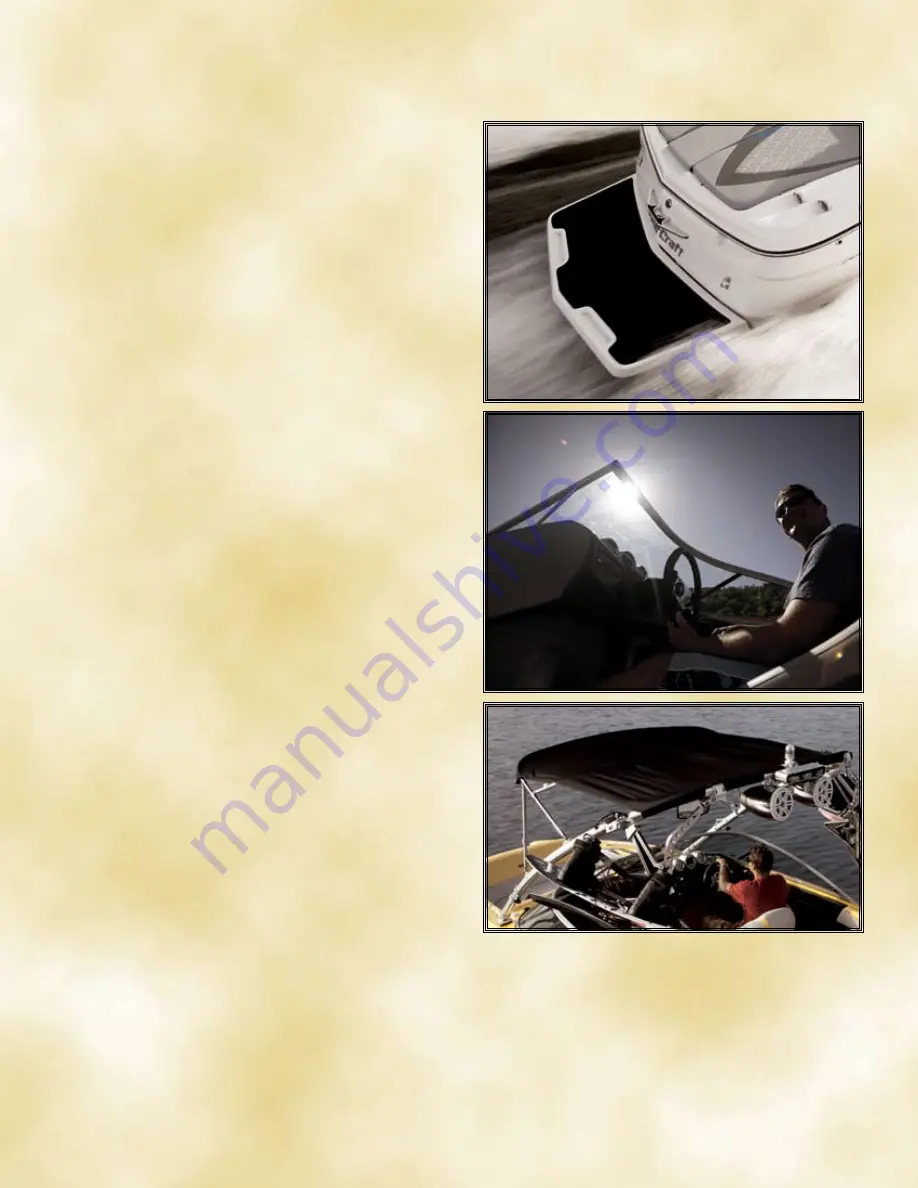
allow to air dry. Sanded areas will appear lighter after sanding and will blend in with the surrounding areas
within a day or two. If a chemical stain is allowed to dry and soap and water do not remove it, the surface
can be lightly sanded with 60-grit sandpaper. Sand the stain in the same direction as the black caulk seams.
Sanded areas will appear lighter after sanding and will blend in
with the surrounding areas within a day or two.
If bleach is used on areas surrounding the teak inlay deck,
first spray the surface with water to dilute any bleach that may
run onto the deck surface. After cleaning the other area(s) with
bleach, re-spray both the bleached surfaces and the teak surfaces
to rinse away any bleach residue.
Note that bleach should never
be applied directly to the teak!
Fiberglass Swim Platform
The fiberglass swim platform requires the same kind of regu-
lar—and gentle—cleaning that the rest of the boat needs. After
cleaning off any environmental debris, wash with mild soap and
warm water. Avoid the use of ArmorAll or similar types of rubber-
shine products as these will speed the decay of the rubber rather
than protecting it.
Windshield
In cleaning tempered glass windshields, the normal glass
cleaners (from spray bottles or aerosol cans) work best. While
the glass is very strong, it can be scratched if anything abrasive is
used. Harsh chemicals or solvents should be avoided because they
may affect the vinyl gaskets or powder-coated finish on the extru-
sions.
More care should be taken when cleaning the clear Eisen-
glass curtains, which are an option on some boat models. Eisen-
glass curtains are usually made with clear vinyl sheeting, which
is much softer and more prone to scratching and hazing than the
windshield glass is, only soft cloths and mild detergents should be
used.
Canvas Covers
The material used in constructing Bimini tops and boat cov-
ers is made from 100 percent solution-dyed polyester fiber with a
urethane coating to provide excellent water repellency and mildew
resistance. This design allows the material to be easily maintained.
By following a few simple care and cleaning steps, the fabric will
continue to look good and maintain its fine qualities for seasons
to come.
Important Background Information
Because the fabrics are woven, they are breathable. It’s also
important to know that these fabrics are treated with a fluorocar-
bon finish, which enhances water repellency. This finish requires
replenishment after vigorous cleaning.
Polyester fabric will not support the growth of mildew. Mold
and mildew need something on which to grow and polyester fabric
is not a desirable substance for such growth. Dirt or dust on the fab-
ric, however, is a perfect source for mildew growth, which makes regular cleaning of the fabric important.
There is no set time for when the fabric should be cleaned, and the local environment has a great deal to
do with determining cleaning frequency. Cleaning is required less frequently in a dry environment than in a
humid one where heavy foliage exists.
The material has an applied finish that deters mold and mildew growth, but it does not make it mold-
proof. Keeping the fabric free of dirt and foreign substances is important in deterring mold growth.
2011 Owners Manual...Cleaning the Boat...Page 14-3
Summary of Contents for prostar 190 2011
Page 26: ...Guide to Individual Models 2011 Owners Manual Guide to Individual Models Page 4 1...
Page 81: ......
Page 93: ......
Page 105: ......








